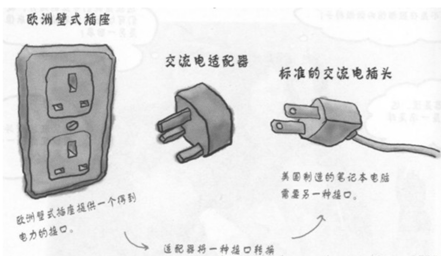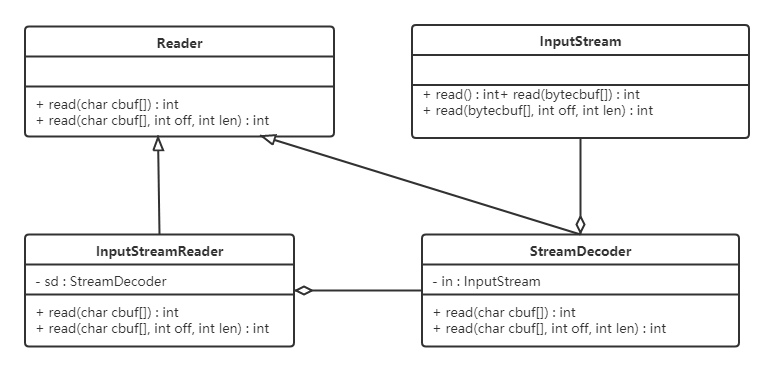前言

将一个类的接口,替换成客户端希望的另外一个接口,使原本因接口不兼容的类能一起工作,这就是适配器模式。
原文地址:https://xuedongyun.cn/post/26888/
适配器模式的角色
适配器模式(Adapter)包含以下主要角色
- 目标(Target)接口:当前业务所期待的接口
- 适配者(Adapter)类:当前组件的接口
- 适配器(Adapter)类:一个转换器,把适配者接口,转化为目标接口
类适配器模式
实现方法:定义一个适配器类来实现当前业务接口,同时又继承原有组件
- 假如我们的电脑只能读取SD卡,读取TF卡就需要适配器模式
1
2
3
4
5
6
7
8
9
| public class Computer {
public String readSD(SDCard sdCard) {
if(sdCard == null) {
throw new NullPointerException("sd card null");
}
return sdCard.readSD();
}
}
|
1
2
3
4
5
6
7
8
9
10
11
12
13
14
15
16
| public interface SDCard {
String readSD();
void writeSD(String msg);
}
public class SDCardImpl implements SDCard {
public String readSD() {
String msg = "sd card read a msg :hello word SD";
return msg;
}
public void writeSD(String msg) {
System.out.println("sd card write msg : " + msg);
}
}
|
1
2
3
4
5
6
7
8
9
10
11
12
13
14
15
16
17
| public interface TFCard {
String readTF();
void writeTF(String msg);
}
public class TFCardImpl implements TFCard {
public String readTF() {
String msg ="tf card read msg : hello word tf card";
return msg;
}
public void writeTF(String msg) {
System.out.println("tf card write a msg : " + msg);
}
}
|
1
2
3
4
5
6
7
8
9
10
11
12
13
14
|
public class SDAdapterTF extends TFCardImpl implements SDCard {
@Override
public String readSD() {
System.out.println("adapter read tf card ");
return readTF();
}
@Override
public void writeSD(String msg) {
System.out.println("adapter write tf card");
writeTF(msg);
}
}
|
1
2
| SDAdapterTF adapter = new SDAdapterTF();
computer.readSD(adapter);
|
对象适配器模式
实现方式:该类实现当前业务接口,同时将现有组件引入适配器类中
1
2
3
4
5
6
7
8
9
10
11
12
13
14
15
16
17
18
19
|
public class SDAdapterTF implements SDCard {
private TFCard tfCard;
public SDAdapterTF(TFCard tfCard) {
this.tfCard = tfCard;
}
public String readSD() {
System.out.println("adapter read tf card ");
return tfCard.readTF();
}
public void writeSD(String msg) {
System.out.println("adapter write tf card");
tfCard.writeTF(msg);
}
}
|
应用场景
- 以前的组件满足功能需求,但是接口定义不一致
- 第三方开发的组件,接口定义不一致
在JDK中,使用InputStreamReader,进行从InputStream(字节流)到Reader(字符流)的转换。
- InputStreamReader继承了抽象类Reader
- InputStreamReader内部使用了StreamDecoder来执行实际的功能(抽象类Reader的具体实现)
- 不是Java SE API中的内容,是Sun JDK给出的实现
- 对构造方法中的字节流类(InputStream)进行封装,并通过该类进行了字节流和字符流之间的解码转换
1
2
3
4
5
6
7
8
9
10
11
12
13
14
| public class InputStreamReader extends Reader {
private final StreamDecoder sd;
public int read() throws IOException {
return sd.read();
}
public int read(char[] cbuf, int off, int len) throws IOException {
return sd.read(cbuf, off, len);
}
}
|

结论:
- 表层来看,InputStreamReader做了InputStream(字节流)到Reader(字符流)之间的转换
- 实际上,是StreamDecoder的设计实现,采用了适配器模式



